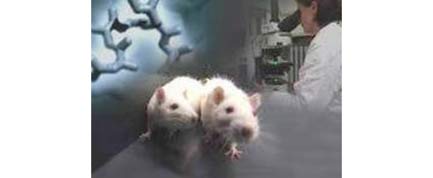Why Lab Animals are Still Used

Research involving animals has come a long way since Pavlov made his dogs drool. Animal research today is regulated rigorously and is far more humane and efficient.
Still, many people associate animal testing with bunny rabbits wearing more mascara than Tammy Faye Baker, or monkeys chained to rocks and zapped with Tasers to test whether being chained to rocks and zapped with Tasers causes cancer.
Such thinking led to the firebombing on Feb. 5 of the home of Edythe London, a well-respected scientist at the University of California, Los Angles, whose research on nicotine addiction involves a variety of animals, including monkeys.
It's unclear whether the perpetrators of this violent act ever get sick and seek medical advice, because nearly every medical advance in the last century — as well as the foundation of germ theory in the 1800s — has involved animal testing.
Nor is it clear whether they knew that earlier that same day, 3,000 miles away in Bethesda, Md., the very people who fund London's work were announcing ways to further reduce, refine and replace the use of animals in research, an ongoing practice known as the 3Rs.
Despite fantastic advances in computing and in vitro testing on human cells, animal testing remains a necessity for better understanding how to alleviate human suffering. This might make you feel queasy, but there's medicine for that — developed upon years of animal research.
No backbone
Sign up for the Live Science daily newsletter now
Get the world’s most fascinating discoveries delivered straight to your inbox.
Most animal-based research involves worms and flies, which doesn't upset anyone because these animals have no backbone. Most research using vertebrates involves mice, rats, frogs and zebrafish. The use of these animals, too, usually fails to raise many eyebrows.
Most of the anger is against those rare studies involving monkeys, because they are so much like us, or dogs, because their man's best friend, or rabbits, because they are so darn cute.
However, the Animal Liberation Front, the group claiming responsibility for the Edythe London attack, seems to oppose most research involving animals. The group wants to liberate mice from being anesthetized and dissected so that they can instead frolic in the woods and get ripped apart and slowly eaten alive by hawks.
Regulated
That kid in your neighborhood who burned ants with a magnifying glass did not grow up to be a sadistic scientist torturing mice. Researchers like London are thoughtful, motivated people who use animals in their research because they want to help humans and because they have no non-animal alternative.
In fact, scientists must prove there is no alternative to receive U.S. federal funding. Approval for the right to use animals comes through an Institutional Animal Care and Use Committee, which exists at all U.S. research facilities using animals for federally funded research.
Animal abuse can occur, but incidences are too rare to justify the abolishment of animal testing. Rules in place minimize the number of animals used and the pain, if any, the animal will endure.
In the lab
Animals aren't merely used to determine what chemicals cause cancer. Mostly they are used to understand how the body works. Animals of choice include drosophila (fruit flies), nematodes (roundworms) and mice because they make for efficient studies.
Flies and worms live only a couple dozen days, and many generations can be studied in the course of a few months. Mice, more so than rats, can be genetically modified to contain or lack certain bits of DNA to understand how genes affect susceptibility and resistance to disease.
Last Tuesday, the Interagency Coordinating Committee on the Validation of Alternative Methods (ICCVAM), with its roll-off-your-tongue name that perhaps originated in a lab of tortured, typing monkeys, announced a five-year plan to advanced alternative testing methods. The ICCVAM comprises 15 federal regulatory and research agencies, including the National Institutes of Health, which funds London's nicotine work.
The ICCVAM has examined nearly 200 test methods to see which are truly effective and has eliminated many. Its five-year plan comes after many years of discussions among scientists and the public about how to improve testing.
Public debate of abuses and failings in animal testing such as this can lead to progress, more so than firebombing, which as best might kill some rats rummaging in trashcans.
- Video: Scientists Expand Chimp Minds
- The Freakiest Lab Animals
- Amazing Things You Didn't Know About Animals
Christopher Wanjek is the author of the books “Bad Medicine” and “Food At Work.” Got a question about Bad Medicine? Email Wanjek. If it’s really bad, he just might answer it in a future column. Bad Medicine appears each Tuesday on LiveScience.

Christopher Wanjek is a Live Science contributor and a health and science writer. He is the author of three science books: Spacefarers (2020), Food at Work (2005) and Bad Medicine (2003). His "Food at Work" book and project, concerning workers' health, safety and productivity, was commissioned by the U.N.'s International Labor Organization. For Live Science, Christopher covers public health, nutrition and biology, and he has written extensively for The Washington Post and Sky & Telescope among others, as well as for the NASA Goddard Space Flight Center, where he was a senior writer. Christopher holds a Master of Health degree from Harvard School of Public Health and a degree in journalism from Temple University.









